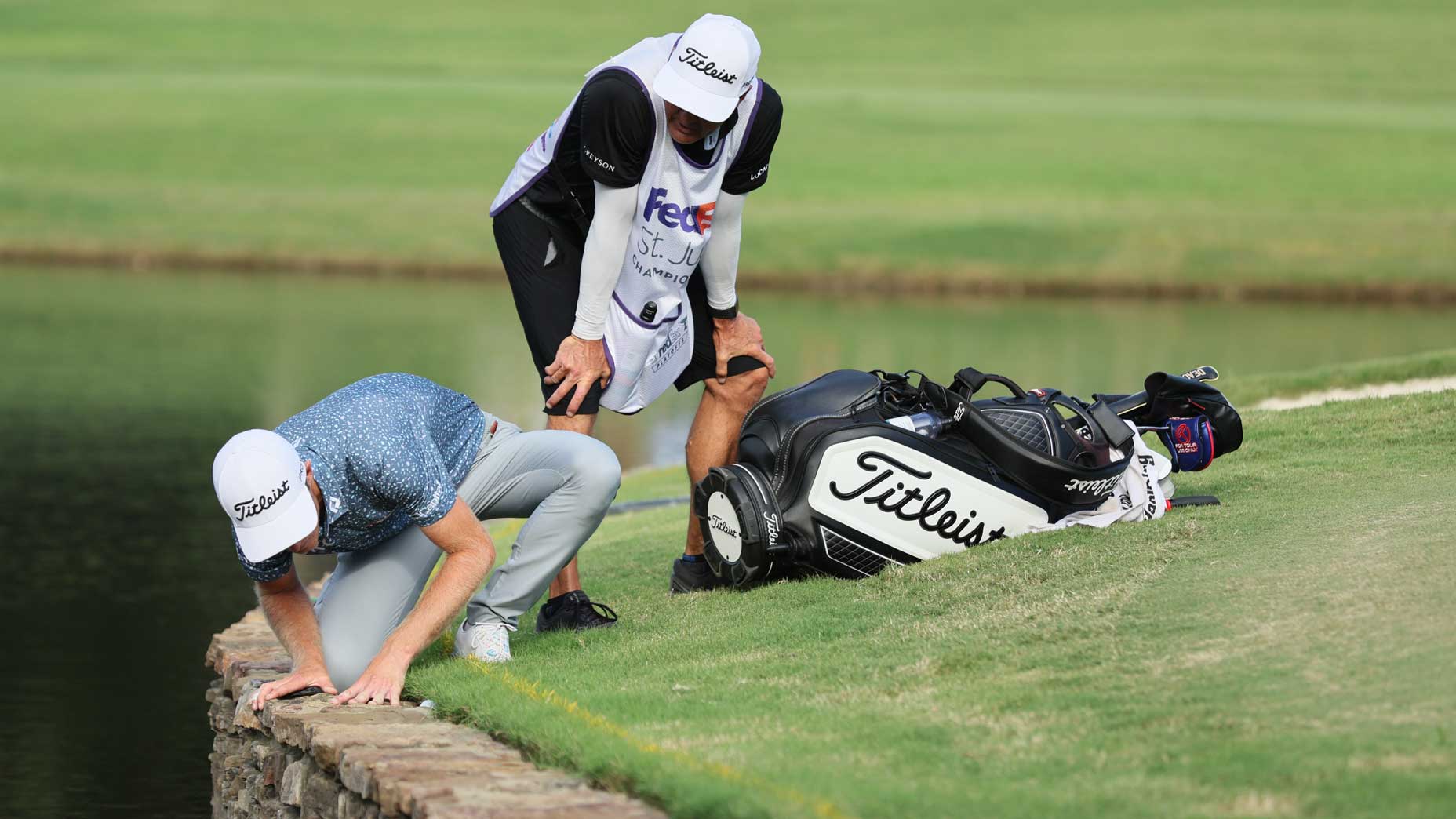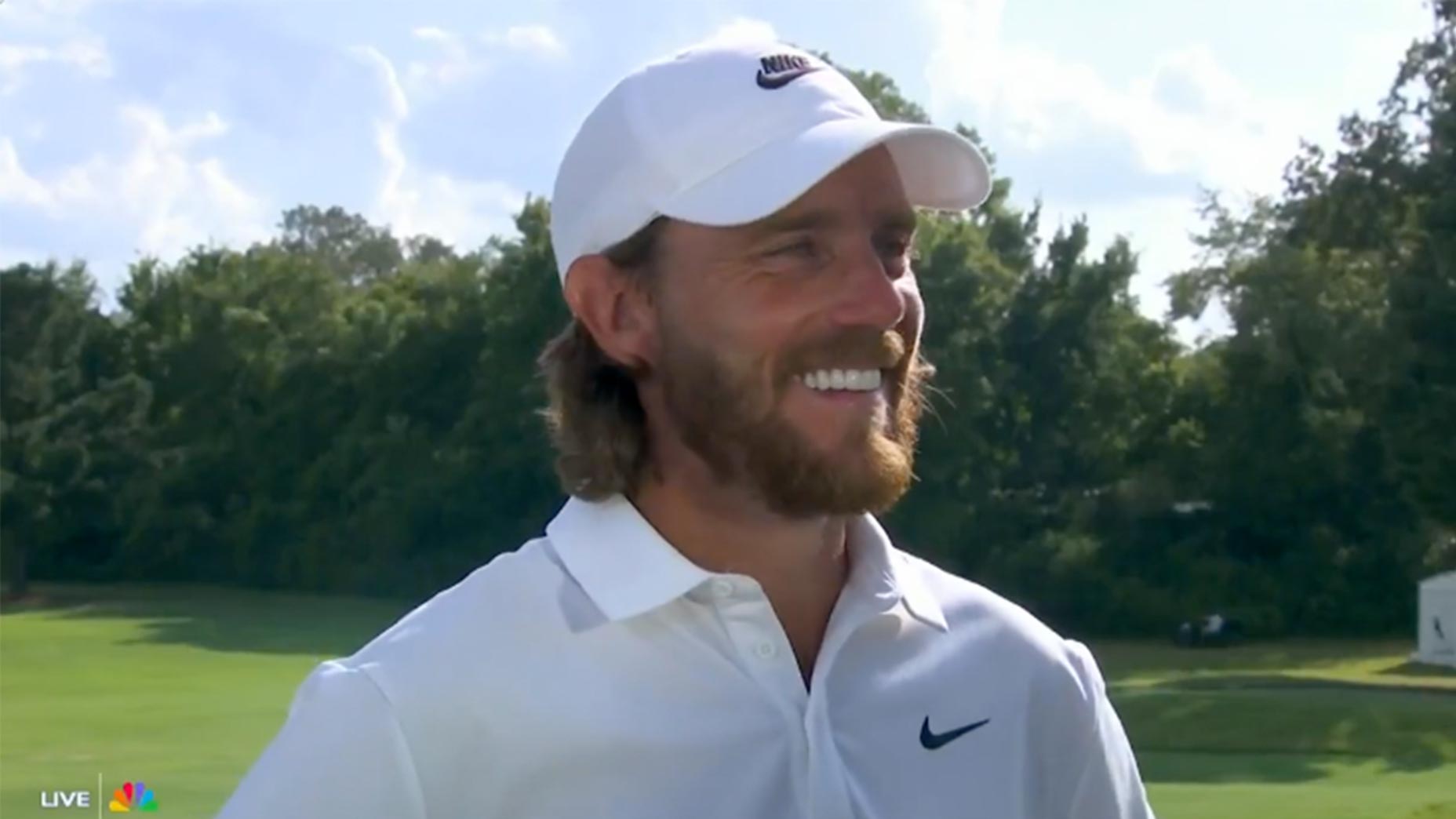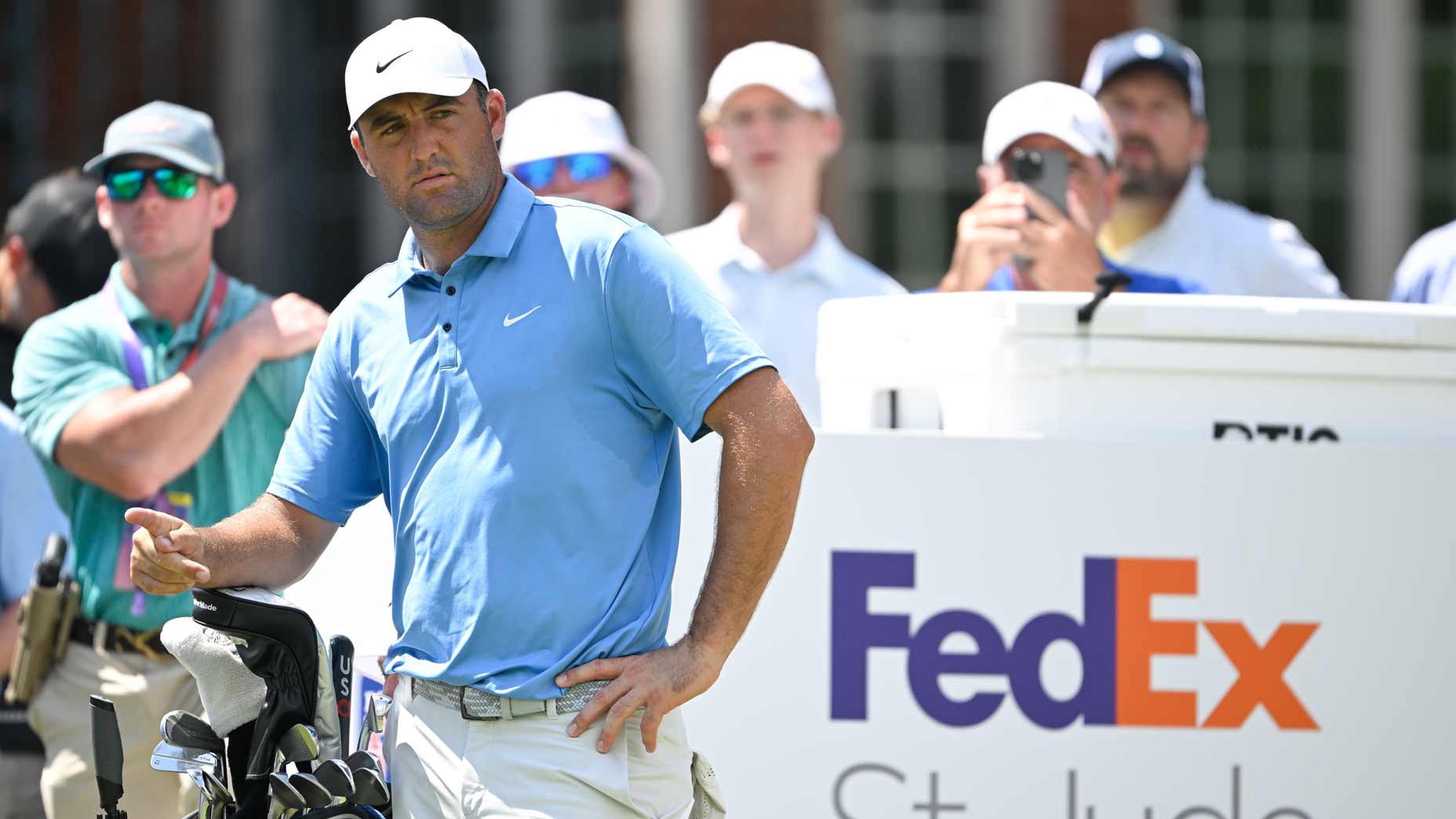Ron Prichard was glued to the FedEx St. Jude Championship playoff between Will Zalatoris and Sepp Straka at TPC Southwind Sunday evening.
He had a couple of good reasons for tuning in.
For one, the action was riveting, with Zalatoris and Straka trading blows over three thrilling holes of sudden death. For another, Prichard designed TPC Southwind, which opened for play back in 1988.
During the commercial before the third playoff hole — the watery par-3 11th — Prichard stepped away from the TV in his Philadelphia-area home. When he returned, he’d missed a few moments of the broadcast.
Tour Confidential: PGA Tour-LIV court battle, Will Zalatoris’ breakthroughBy: GOLF Editors
“I came back in and what I did see was Straka’s ball go in the water,” Prichard told GOLF.com. “And when I saw his ball go in the water, I saw what I thought was a ball wedged in a little crease between the sod and the stone wall.”
Prichard’s eyes had not deceived him. Before Straka had rinsed his tee shot, Zalatoris had almost dunked his own tee ball.
Almost.
Zalatoris’ ball had come up short, just as Straka’s had, but it bounced several times on the stone wall guarding the front of the 11th green before nestling in a rut that separates the rough from the edge of the wall. “A minor miracle,” NBC analyst Paul Azinger said on the telecast.
“A couple of seconds later, they showed Zalatoris’ shot,” Prichard said. “I was shocked.”
HOW?! pic.twitter.com/8o94eaSXH4
— PGA TOUR (@PGATOUR) August 14, 2022
Prichard was stunned not only because the ball had settled next to the wall but also because there was a wall there at all.
When the course opened for play, Prichard said, there were no walls by the water hazards — just turf that ran directly into the water a la what you see at Augusta National.
“I’ve always felt from a settings standpoint, and then obviously from a playing standpoint, that should not be a situation where a ball comes down and lands on top of a stone wall and bounces anywhere,” Prichard said.
The course added walls to several of its lakes in 2019, TPC Southwind superintendent Nick Bisanz told GOLF.com. The 11th hole was in particular need of a wall, he said, because the steep bank was beginning to collapse.
“We’ve never considered covering [the walls] with turf,” Bisanz said.
He added that Prichard’s preference to cover the walls isn’t necessarily wrong — it’s just Bisanz’s architectural preference to leave them exposed.
Bisanz also said that even a wall capped with turf could still lead to unpredictable bounces.
As for the result of Zalatoris’ tee ball? Bisanz said he was as surprised as everyone watching at home.
“I don’t see how his ball found that crevice,” he said. “That was a very unique little spot… I’ve never seen it before.”
In the end, Zalatoris’ potential break was moot, given he determined he couldn’t play his next shot from the wall. He took a drop and and still got up and down, which was good enough to beat Straka and claim his first PGA Tour title.
Still, the episode provided for some excellent theater, especially for the guy who designed the course.











